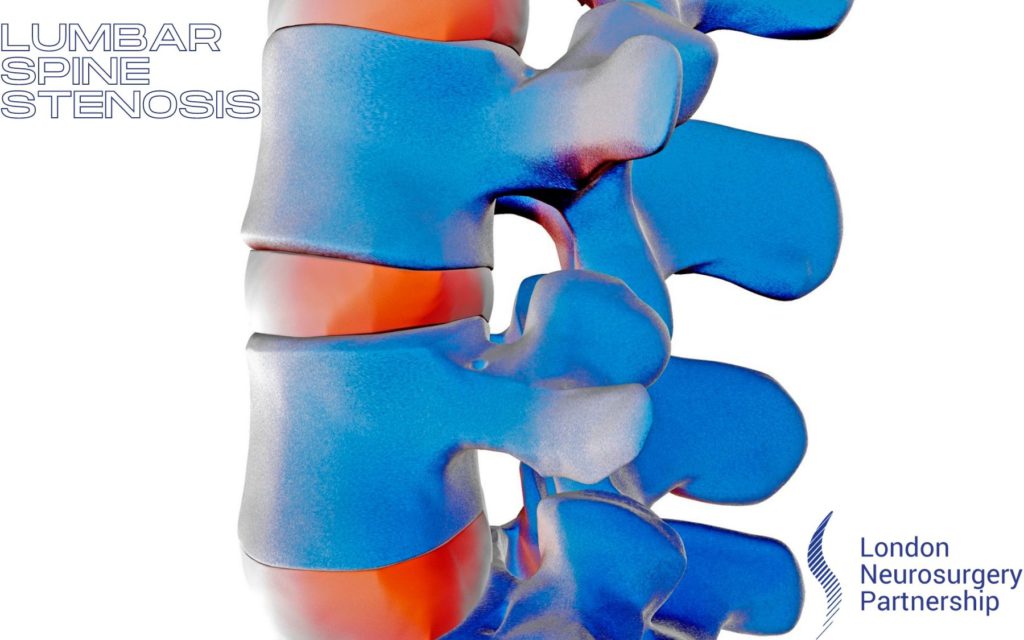
Lumbar spine stenosis occurs when the spinal canal or spinal nerve root passage narrows in your back. The narrowing causes the spine canal or nerves to become compressed and can therefore lead to symptoms such as pain, numbness and weakness in your legs or hips. It is important that you see your doctor as soon as possible if you experience any of these symptoms to ensure that no long-lasting damage is done.
Lumbar spine stenosis is more common in people over the age of 50, and is usually caused as a result of wear and tear of the lumbar discs as you age. Patients may have been suffering from persistent back pain for years before symptoms become more severe. It can also be caused by an injury or trauma to the back. As we age our spinal discs lose their elasticity and are unable to withstand the pressure from activities such as lifting and sometimes even walking. These changes can lead to a reduced amount of space between the vertebrae and therefore mean that the nerves are put under additional pressure.
If your doctor believes that you have lumbar spine stenosis it is likely that they will review your medical history and suggest an MRI scan. This can also be very helpful when trying to diagnose lumbar spine stenosis, and it can help to show if there is a loss of height between the discs, if there is a disc bulge, which is often due to natural degeneration.
The good news is that most patients with lumbar spine stenosis do not need surgery, and conservative treatment works very well; for example, physical therapy, specific exercises or medication. If none of the conservative methods of treatment are successful or symptoms worsen, then spinal injections or surgery may be the next options. In severe very cases, surgery may be the first option. If you are put forward for surgery, then your surgeon will explain everthing before you decide whether to go ahead. The goal of the surgery is to take the pressure off the nerves and therefore resolve/reduce the symptoms that you are experiencing. This type of surgery is called a decompression as it is reducing the compression on the nerves.
There are a number of different ways that this can be done. These include:
- Laminectomy
- Foraminotomy
- Microdiscectomy
- PLDD
- Minimally invasive spine surgery
Over the years there have been a lot of changes in the way that spinal surgery is done. This means that many procedures can be done using minimally invasive techniques. This has benefits including:
Outpatient surgery (going home the same day as the surgery)
Smaller incision
Speedier recovery
This article is intended to inform and give insight but not treat, diagnose or replace the advice of a doctor. Always seek medical advice with any questions regarding a medical condition.
Back to spinal conditions.





0 Comments